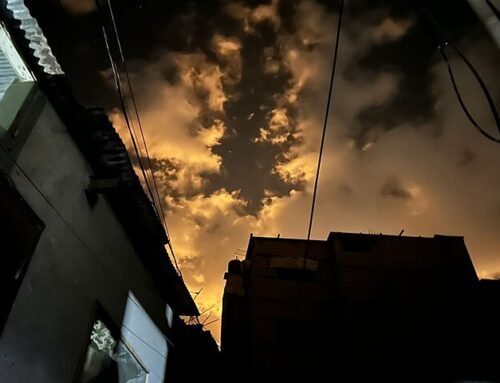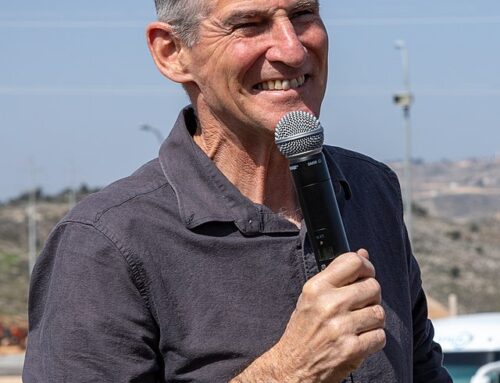Joshua Leifer, Tablets Shattered: The End of an American Jewish Century and the Future of Jewish Life (New York, Dutton, 2024)
Review by Paul Scham
In case anyone hasn’t already realized it, Joshua Leifer’s Tablets Shattered makes absolutely clear that there is a massive generational chasm between Jewish millennials and their baby boomer parents (or grandparents). Leifer, born in 1993, is on one side while I, on the other, am tottering off into the twilight. While I thought I knew something about today’s Jewish world, Leifer has persuaded me that I’ve been looking in all the wrong places.
Leifer is a leftwing activist and journalist, with a Conservative day school upbringing and a current tendency towards aspects of the Haredi (ultra-Orthodox) lifestyle. Those are familiar enough categories, but Leifer views them in a context where the Jewish establishment is irrevocably sundered from the mass of American Jews and the traditional verities regarding Israel are revealed as bubbemeises. Meanwhile, both comprehensive protest against current Israeli reality (i.e. the occupation and all that flows from it) as well as a new sprouting of traditional Jewish learning and practices are expanding among his generation, the millennials. He refers to the last 100 years, since the 1924 U.S. immigration act effectively ended the great Jewish immigration of the previous four decades, as “The Jewish Century”. While he has no doubt that the apex of American Jewish life has now passed, he is cautiously optimistic that a new version may be arising – hence the metaphor of “Tablets Shattered,” after which God provided a new set.
The book’s first few chapters read like a home movie of American Jewish life from the late ‘60s till around 9/11, which years I actually experienced and participated in (I started college in 1967). While they are portrayed a bit on the idyllic side, Leifer makes an important distinction between the more secular and political protest generation of the late ‘60s (mine) and those who led the Soviet Jewry movement of the 1970s and ‘80s, who were slightly younger, more traditional, and more Jewishly-educated. However, along with the concurrent Ba’al T’shuvah (return to traditional Judaism) movement, the real change he identifies was the “Zionification” of most American Jewish communal life in the decades after the Six Day War of 1967. This included synagogues, where the prayer for the State of Israel became ubiquitous, as did displaying the Israeli flag across from the American one; the “defense” organizations (American Jewish Congress, American Jewish Committee, and ADL), where Israel-related matters came to dominate their agendas; and the communal organizations, which either withered or became likewise Israel-centered. AIPAC, founded in 1963, stayed mostly below most American Jews’ radar till the 1980s, after which it quickly became a focal point, assumed to represent some sort of community consensus.
Indeed, my generation’s Judaism was inextricably intertwined with Israel. Even as some of us became first apprehensive about and then fiercely opposed to the occupation and the hawkish Israeli governments after 1977, we clung to the economically egalitarian, embattled, and optimistic view of Israel we had grown up with – and tried to return to that vision. We failed.
Leifer’s generation began to come of age during the Second Intifada (2000-2005), as our failure started to become apparent and the Israeli peace movement and center-left began to disintegrate. Enforcement of the occupation was millennials’ first – and ever-increasing – lens for viewing Israel, and they saw little to admire or extol. Leifer uncannily describes the arc of my own life ,from fairly Jewishly oblivious in 1967 to setting up the first office of the Israeli peace movement in Washington D.C. in 1989. Meanwhile, some of my contemporaries, including a college roommate, made defending Israeli policy an equally integral part of their worldview. Whatever our politics, those of us who chose to make Judaism a significant part of our lives had by the turn of the century, comfortably embedded ourselves in our own organizations, shuls, and chavurot. We often didn’t recognize how thoroughly these institutions were generationally-based, and that our children’s generation was forming its own groups that fit their own life choices.
Leifer calls attention to another change that I, for one, insufficiently focused on. With the rise of the billionaire class in the 21st century, a disproportionate share of which is Jewish, communal organizations, formerly dependent on contributions from their members, found they could get along with far fewer – and much wealthier – donors. That helps explain the disparity between polls that show dovish American Jewish views predominating, while “Jewish leaders” heading national organizations rarely criticize anything Israel does, their views increasingly divergent from those of their remaining “members,” especially younger ones, if they have any.
Israel’s biggest war with Hamas and Gaza – before the current one of course – was the 2014 Operation Protective Edge. By then, organizations like Jewish Voice for Peace and IfNotNow, the latter explicitly recruiting only younger Jews, were fundamentally criticizing Zionism and Israel in terms that few of my generation could abide. Moreover, they connected Israel with issues like Black Lives Matter and, later, George Floyd’s murder, as different elements of the same fight. Leifer seems to have spent most of the 2010s protesting around the country at innumerable demonstrations co-organized by Jewish groups “as Jews”, few of which I was even aware of. Leifer also contends that many of these groups are dipping into Jewish learning in a serious way, something else I was oblivious to.
Up to this point, Leifer’s Jewish experiences coincide with that of many – though certainly not a majority of – Jews of his generation. He sketchily describes his own partial wakening to ultra-Orthodoxy – while maintaining his leftist principles and activities – apparently because of his fiancée, who came from such a family in Israel. This is the least satisfying part of the book, though it does include a fascinating inside look at the huge Lakewood, New Jersey yeshiva, which has revived traditional Lithuanian-style Yiddishkeit to an extent that would surprise most American Jews. Leifer finds an authenticity in their Judaism that I can respect, but his attempt to reconcile it with his leftism is incomplete and somewhat disappointing.
Leifer also includes more satisfying critiques of Reform and Conservative Judaism – and their inability to retain the membership and support they had a few decades ago. These are serious critiques, but he inexplicably avoids dealing with the large and still-expanding Modern Orthodox movement, which appears to provide spiritual fulfillment to perhaps 10 percent of American Jews, along with a heavy dose of pro-settler, rightwing Zionism. Modern Orthodoxy represents the epitome of the remaining “Zionification” of American Jewish life, and its absence from serious discussion in the book makes Leifer’s larger critique somewhat unbalanced.
The book was completed just before the October 7, 2023 attacks, and includes a short Afterword showing how badly it jolted him, as it did so many of us. As someone who so identified with the Left, his bitterness at so much of the leftist reaction is palpable, as is his anger at the American Jewish establishment.
Since the book’s publication, Leifer himself has become something of a celebrity for a) having a public discussion of his book abruptly canceled by a Brooklyn bookstore because his rabbinical interlocutor was a “Zionist.” The bookstore apologized, rescheduled, and blamed a disgruntled employee; b) Planning to move to Israel, according to Ha’aretz, where, Leifer explained, “the struggle over the Jewish future is happening.” Needless to say, these developments have jacked up interest in the book.
I strongly recommend the book to those of my generation who may be as oblivious as I am to what is going on with his, as well as to Leifer’s own contemporaries, who I think will appreciate his experiences and critiques. He brings an insider’s knowledge of American Jewish life, as well as insight into the somewhat occluded one of Jewish American leftism. As a professor who reads unsteady student papers all the time, I can confirm that his prose is a pleasure to read. He writes as a seasoned journalist, participant, and observer – and the result is a book as satisfying to read as it is thoughtful and informed.
___

Paul Scham is president of Partners for Progressive Israel and Director of the Gildenhorn Institute for Israel Studies at the University of Maryland, where he is a Professor of Israel Studies.






Leave A Comment